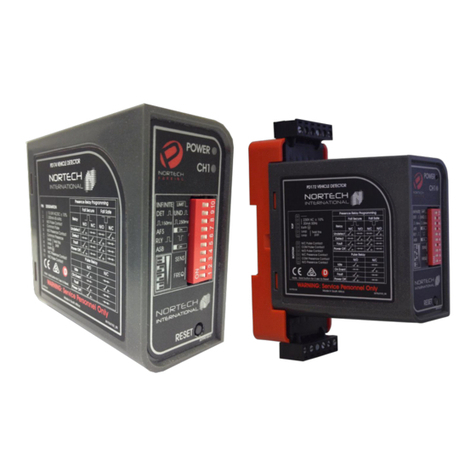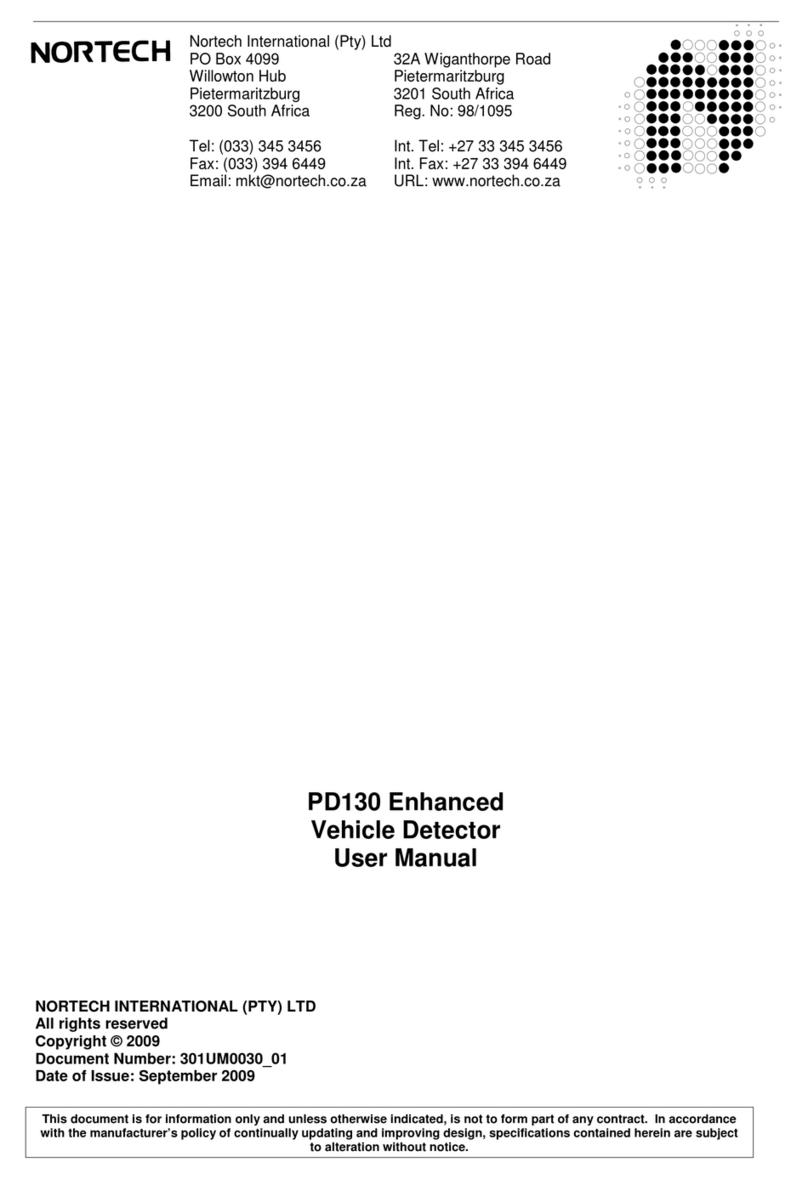302UM0017 Rev 01 PD230 Enhanced Detector User Manual Page 2 of 37
Table of Contents
1.
INTRODUCTION........................................................................................................................5
2.
TECHNICAL DATA ....................................................................................................................7
2.1
Functional Data..........................................................................................................................7
2.2
Electrical Data............................................................................................................................7
2.3
Environmental Data....................................................................................................................8
2.4
Mechanical Data.........................................................................................................................9
2.5
Approvals ...................................................................................................................................9
3.
OPERATING INSTRUCTIONS................................................................................................10
3.1
Hardware Set-up......................................................................................................................10
3.2
Switch Setting Selections.........................................................................................................10
3.2.1
Frequency Switch............................................................................................................10
3.2.2
Sensitivity ........................................................................................................................10
3.2.3
Automatic Sensitivity Boost.............................................................................................11
3.2.4
Presence Time ................................................................................................................11
3.2.5
Pulse / Presence .............................................................................................................11
3.2.6
Reset Switch....................................................................................................................11
3.3
Internal Link Selection..............................................................................................................13
3.4
Power Fail (Option) ..................................................................................................................13
3.5
Front Panel Indicators..............................................................................................................13
4.
PRINCIPLE OF OPERATION..................................................................................................15
4.1
Detector Tuning........................................................................................................................15
4.2
Detector Sensitivity...................................................................................................................15
4.3
Modes of Operation..................................................................................................................16
4.3.1
Presence Mode ...............................................................................................................16
4.3.2
Pulse Mode......................................................................................................................16
4.3.3
AB Logic Presence Mode (Barrier Operation).................................................................17
4.3.4
AB Logic Pulse Mode (Counting Logic)...........................................................................20
4.4
Response Times......................................................................................................................23
5.
INSTALLATION GUIDE...........................................................................................................25
5.1
Product Safety Requirements ..................................................................................................25
5.2
Operational Constraints............................................................................................................25
5.2.1
Environmental Factors to Consider.................................................................................25
5.2.2
Crosstalk..........................................................................................................................26
5.2.3
Reinforcing ......................................................................................................................26
5.3
Loop and Feeder Material Specification...................................................................................26
5.4
Sensing Loop Geometry...........................................................................................................27
5.5
Loop Installation.......................................................................................................................27
6.
CONFIGURATION...................................................................................................................30
6.1
PD231 Enhanced Detector : English........................................................................................30
6.2
PD232 Enhanced Detector: English.........................................................................................31
6.3
PD234 Enhanced Detector: English.........................................................................................31
7.
APPLICATIONS.......................................................................................................................32
8.
CUSTOMER FAULT ANALYSIS..............................................................................................33
8.1
Fault Finding.............................................................................................................................33
8.2
DU100 – Detector Diagnostic Unit ...........................................................................................34
8.2.1
Interpretation of the DU 100 readings .............................................................................34
8.2.1.1 Frequency.........................................................................................................................34
8.3
Functional Test.........................................................................................................................36
APPENDIX A - FCC ADVISORY STATEMENT..............................................................................37
APPENDIX B – INSTALLATION OUTDOORS...............................................................................38
Appendix B.1
IEC 60950-22:2005 – Outdoor cabinet...............................................................38

































